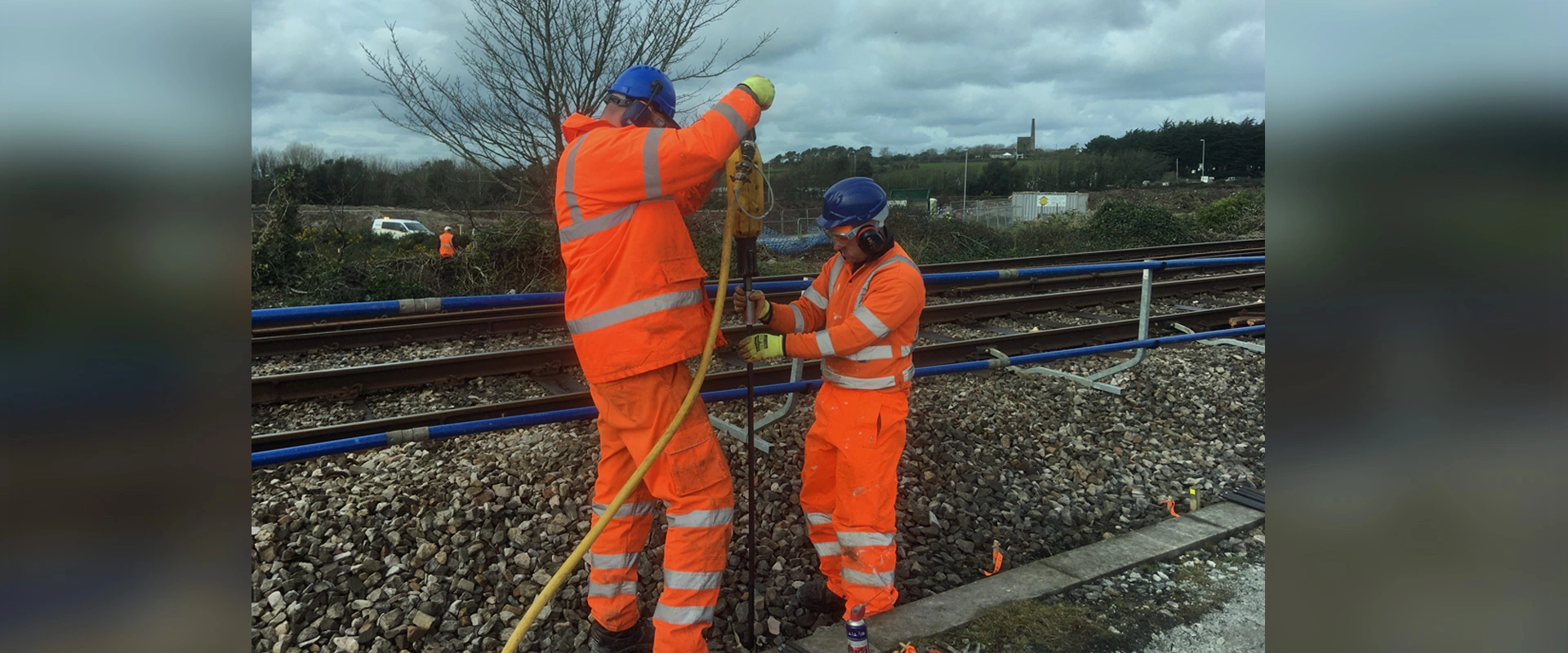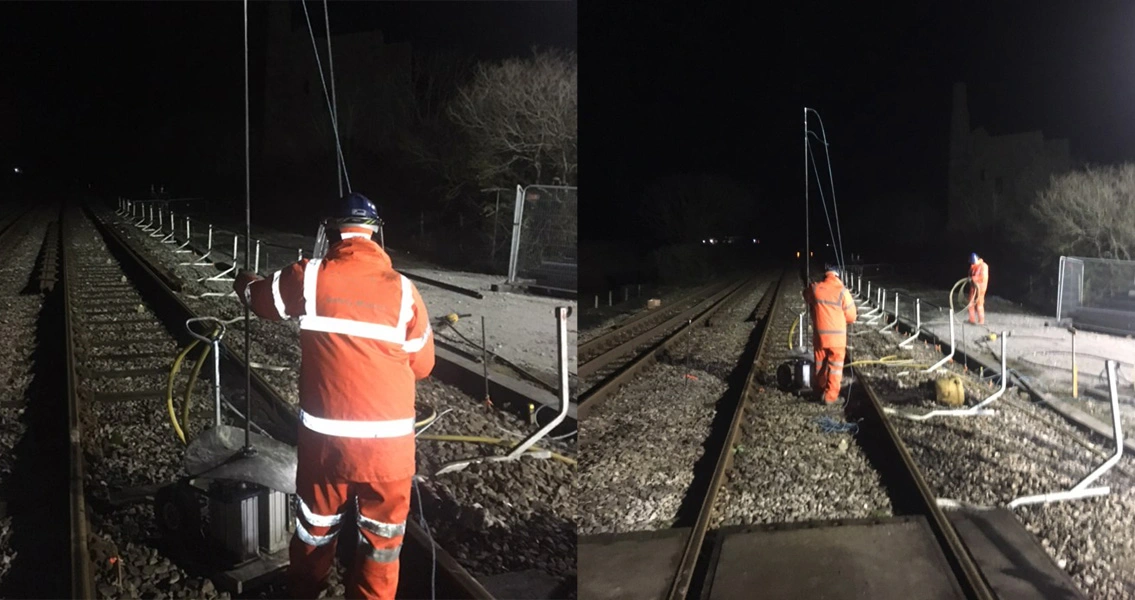Opšte i obavezne informacije
MC-Bauchemie shvata veoma ozbiljno zaštitu vaših ličnih podataka. Vaše lične podatke smatramo povjerljivim i prema njima se odnosimo u skladu sa obaveznim propisima vezano za zaštitu podataka i ovom politikom privatnosti.
Odgovorna strana
Odgovorna strana na ovom veb sajtu je:
MC-Bauchemie Müller GmbH & Co. KG
Müllerstraße 1-8
46238 Bottrop
Njemačka
Telefon: +49 (0) 2014 101-0
Faks: +49 (0) 2014 101-400
E-Mail: info(a)mc-bauchemie.de
Službenik za zaštitu podataka
Imenovali smo službenika za zaštitu podataka za našu kompaniju:
Andreas Kuczera
Službenik za zaštitu podataka MC Grupe
Telefon: +49 (0) 20 41 101-0
Faks: +49 (0) 20 41 101-400
E-Mail: dsb(a)mc-bauchemie.de
Sakupljanje podataka na našem veb sajtu
Kolačići
Neke od naših veb stranica koriste kolačiće. Kolačići ne štete vašem računaru i ne sadrže viruse. Kolačići pomažu da naša web stranica bude jednostavnija za upotrebu, efikasnija i bezbjednija. Kolačići su mali tekstualni fajlovi koji se skladište na vašem računaru i čuvaju u vašem pretraživaču.
Većina kolačića koje koristimo su takozvani "kolačići sesije". Oni se automatski brišu nakon vaše posete. Ostali kolačići ostaju u memoriji vašeg uređaja dok ih ne izbrišete. Ovi kolačići omogućavaju da prepoznate vaš pretraživač kada slijedeći put posjetite sajt.
Možete da konfigurišete vaš pretraživač da vas obavještava o korišćenju kolačića, tako da možete da odlučite od slučaja do slučaja da li ćete prihvatiti ili odbiti kolačić. Alternativno, vaš pretraživač može biti konfigurisan tako da automatski prihvata kolačiće pod određenim uslovima ili da ih uvijek odbija, ili da automatski briše kolačiće prilikom zatvaranja pretraživača. Onemogućavanje kolačića može da ograniči funkcionalnost ovog web sajta.
Kolačići koji su neophodni za omogućavanje elektronske komunikacije ili za obezbjeđivanje određenih funkcija koje želite da koristite čuvaju se u skladu sa čl. 6 paragraf 1, (f) Opšte uredbe o zaštiti podataka o ličnosti (GDPR). Operater web sajta ima legitiman interes za skladištenje kolačića kako bi osigurao da se pruža optimizovana usluga bez tehničkih grešaka. Ako su i drugi kolačići (kao što su oni koji se koriste za analizu vašeg ponašanja u pretraživanju) takođe uskladišteni, oni će biti tretirani odvojeno u ovoj politici privatnosti.
Prenos u treće zemlje izvan Evropskog ekonomskog prostora nije planiran (uz izuzetak kolačića od eksternih komponenti za koje je to izričito navedeno).
Log datoteke servera
Mi automatski prikupljamo i čuvamo informacije u takozvanim log datotekama servera na osnovu našeg legitimnog interesa (član 6 paragraf 1 (f) GDPR), koje nam vaš pretraživač automatski prenosi. To su:
- Tip i verzija pretraživača
- Operativni sistem koji se koristi
- URL preporuke
- Naziv host računara koji pristupa
- Vrijeme zahtjeva servera
- IP-adresa
Ovi podaci se ne kombinuju sa podacima iz drugih izvora. Log datoteke servera se skladište maksimalno 7 dana a zatim se brišu. Skladištenje podataka se radi zbog razloga bezbednosti, npr. da bi se razjasnili slučajevi zloupotrebe. Ako podaci moraju da se opozovu iz razloga dokazivanja, oni se isključuju iz opcije brisanja dok se incident konačno ne razjasni. Tokom ovog perioda, obrada je ograničena.
Kontakt formulari
Nudimo vam kontakt formulare preko kojih nas na dobrovoljnoj bazi možete kontaktirati na mreži. Kao dio kontakt formulara, sakupljamo lične podatke (ime, prezime, adresu, brojeve telefona, e-mail adresu), temu i sadržaj vaše poruke kao i brošure koje ste tražili.
Ove podatke koristimo da bismo odgovorili na vaš zahtjev. Pošto obrađujemo podatke, imamo legitiman interes da odgovorimo na vaše upite (čl. 6, paragraf 1 (f) GDPR). Osim toga, moramo da vodimo evidenciju i na osnovu komercijalnih i fiskalnih propisa (čl. 6, paragraf 1 (c) GDPR).
Podaci se proslijeđuju našem provajderu servisa za hosting koji radi hosting našeg web sajta za nas. Prelazak na treće se ne dešava. Planiramo da gore navedene podatke čuvamo u periodu od 10 godina, a zatim ih izbrišemo. Prenos u treće zemlje izvan Evropskog ekonomskog prostora nije planiran.
Google analitika
Ovaj web sajt koristi Google analitiku, uslugu analitike na mreži. Njome upravlja Google Inc., 1600 Amphitheater Parkway, Mountain View, CA 94043, SAD. Google analitika koristi takozvane "kolačiće". To su tekstualne datoteke koje se čuvaju na vašem računaru i koje vam omogućavaju analizu upotrebe web sajta. Informacije koje generiše kolačić o vašem korišćenju ovog web sajta se obično prenose na Google server u SAD i tamo se čuvaju. Kolačići usluge Google analitike čuvaju se na osnovu čl. 6 paragraf 1 (f) GDPR. Operator web sajta ima legitiman interes da analizira ponašanje korisnika kako bi optimizovao kako svoj web sajt tako i njegovo oglašavanje.
IP anonimizacija
Aktivirali smo funkciju IP anonimizacije na ovom web sajtu. Google skraćuje vašu IP adresu u okviru Evropske unije ili drugih strana Sporazuma o Evropskom ekonomskom prostoru prije slanja u Sjedinjene Države. Puna IP adresa se šalje na Google server u SAD samo u izuzetnim slučajevima i tamo se skraćuje. Google će koristiti ove informacije u ime operatera ovog web sajta za procjenu vašeg korišćenja web sajta, za sastavljanje izvještaja o aktivnostima na web-sajtu i za pružanje drugih usluga vezano za aktivnost web sajta i korišćenje interneta za operatera web sajta. IP adresa koju vaš pretraživač prenosi kao dio Google analitike neće biti integrisana ni sa kakvim drugim podacima koje posjeduje Google.
Dodaci pretraživača
Možete spriječiti da se ovi kolačići skladište odabirom odgovarajućih podešavanja u vašem pretraživaču. Međutim, želimo da istaknemo da to može značiti da nećete moći da uživate u punoj funkcionalnosti ovog web sajta. Također možete da spriječite da se podaci koje generišu kolačići o vašem korišćenju web sajta (uključujući vašu IP adresu) proslijeđuju Google-u, kao i obradu tih podataka od strane Google-a, tako što ćete preuzeti i instalirati dodatke za pretraživač za pregledač koji su dostupni na slijedećem linku:
Odbijanje prikupljanja podataka
Možete da spriječite prikupljanje podataka od strane Google analitike klikom na sledeći link. Kolačić za opciju odustajanja će biti podešen da spriječi prikupljanje vaših podataka pri budućim posjetama ovom web sajtu:
Za više informacija o tome kako Google analitika upravlja korisničkim podacima, pogledajte Google politiku privatnosti:
Spoljna obrada podataka
Sklopili smo ugovor sa Google za autsorsovanje obrade naših podataka i u potpunosti implementiramo stroge zahtjeve njemačkih vlasti za zaštitu podataka kada koristimo Google Analytics.
YouTube
Naš sajt koristi dodatke sa YouTube-a, kojim upravlja Google. Operater stranica je YouTube LLC, 901 Cherri Ave., San Bruno, CA 94066, USA. Ako posjetite neku od naših stranica sa YouTube dodatkom, uspostavlja se veza sa YouTube serverima. Ovde je YouTube server obavješten o tome koje od naših stranica ste posjetili. Ako ste prijavljeni na YouTube nalog, YouTube vam omogućava da direktno povežete svoje ponašanje pretraživanja sa vašim ličnim profilom. To možete da spriječite tako što ćete se odjaviti sa YouTube naloga. YouTube se koristi kako bi naš sajt bio privlačan. Ovo predstavlja opravdani interes u skladu sa čl. 6 paragraf 1 (f) GDPR. Više informacija o rukovanju korisničkim podacima možete pronaći u izjavi o zaštiti podataka YouTube-a pod https://www.google.de/intl/de/policies/privacy
Opoziv vaše saglasnosti za obradu vaših podataka
Neke operacije obrade podataka su moguće samo uz vašu izričitu saglasnost. Možete opozvati vašu saglasnost u bilo kom trenutku sa stupanjem na snagu u budućnosti. Dovoljan je neformalni email da se uputi ovakav zahtev. Podaci koji su obrađeni prije nego što primimo vaš zahtjev mogu se i dalje obrađivati po zakonu.
Pravo da se podnose žalbe regulatornim organima
Ako je došlo do kršenja zakona o zaštiti podataka, oštećena osoba može podneti žalbu nadležnim regulatornim organima. Nadležni regulatorni organ za pitanja koja se odnose na zakonodavstvo o zaštiti podataka je:
Landesbeauftragte fur Datenschutz und Informationsfreiheit NRV, Dusseldorf.
Pravo na prenosivost podataka
Imate pravo da imate podatke koje obrađujemo na osnovu vašeg pristanka ili ispunjavanja ugovora koji se automatski isporučuju vama ili trećoj strani u standardnom, mašinski čitljivom formatu. Ako vam je potreban direktan prenos podataka drugoj odgovornoj strani, to će biti učinjeno samo u mjeri u kojoj je to tehnički izvodljivo.
Informacije, ispravka, blokiranje, brisanje
Kao što je dozvoljeno čl. 15 GDPR, imate pravo da u svakom trenutku dobijete besplatne informacije o bilo kojim ličnim podacima koji se čuvaju. Također imate pravo da ispravljate, blokirate ili brišete ove podatke.


